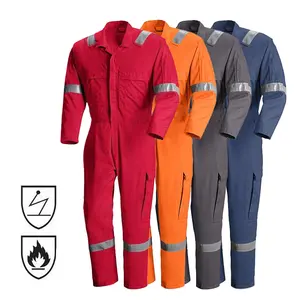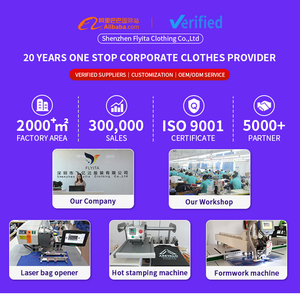(69 products available)




















































































































































































































Biohazard suits are used to protect the user from biological and chemical agents. The suit types differ in protection level, and here are the main types:
Level A
Level A is the highest protection level. It uses a fully encapsulating suit with an independent air supply. The suit provides a barrier against all known chemical and biological agents. It is used in highly contaminated areas. The material is strong and puncture resistant. It has a double zipper and taped seams for maximum protection. The gloves are long and fit over the sleeves. They are tested to ensure they hold under pressure. The boots are part of the suit and have the same material as the gloves. There are no openings that can allow contaminants in.
Level B
Level B is similar but does not provide the same level of protection. The suit also uses an independent air supply. However, it uses a single layer of chemical protective clothing. The material is still strong but offers less barrier protection. The suit has a single zipper and fewer seams. The gloves are shorter and do not go as high up the arms. The boots are separate and have straps to hold them in place. There are more openings than in Level A suits. The suit is easier to put on and take off.
Level C
Level C offers a different type of protection. The suit uses a respirator for air supply. The material provides some chemical protection. It has fewer physical barriers than Levels A and B. The suit is lightweight and allows for better mobility. It has elastic cuffs and ankles to keep contaminants out. The gloves are shorter and are put on before the suit. The boots are separate and have protective covers. The suit is suitable for areas with known and controlled hazards. It is quick to don and doff, making it ideal for situations where speed is critical.
Level D
Level D provides the lowest level of protection. The suit uses surgical masks or dust masks. The suit is loose-fitting and made from basic protective fabrics. The suit has a simple design with few closures. The gloves are thin and offer limited protection. The boots are regular shoes with additional covers. The suit is suitable for low-risk environments. It is easy to wear and allows for quick movement. The suit is not suitable for areas with unknown hazards.
Biohazard suits are designed to provide a high level of protection against hazardous biological agents. Their design incorporates several key features:
Protective Fabrics
The outer material of a biohazard suit is usually a multi-layered composite material that is impermeable to liquids and gases. This is achieved through:
Barrier Layer
This component may be made from materials such as polyethylene (PE), polypropylene (PP), or polyurethane (PU). These substances form a barrier that effectively blocks out water, blood, and other biological fluids.
Microporous Membranes
Microporous membranes are often used in biohazard suits to provide a barrier to liquids and microorganisms while allowing water vapor to pass through. This helps to reduce heat buildup inside the suit while still protecting the wearer from contamination.
Liquid and Gas Impermeability
Biohazard suits must be impermeable to liquids and gases to prevent any form of biological fluids from penetrating through the suit. This is commonly achieved using multi-layered materials consisting of:
Seam Construction Techniques
Different seam construction techniques are used in biohazard suits to enhance their protective capabilities. These include:
Sealing Mechanisms
Sealing mechanisms in biohazard suits are critical for maintaining a secure barrier against hazardous biological agents. These mechanisms include:
Ventilation and Comfort
Ventilation and comfort in biohazard suits are achieved through careful design and the use of specific features:
Biohazard suits are protective garments worn to safeguard the wearer from exposure to hazardous biological agents. Wearing and matching these suits effectively requires careful consideration of the suit's design and the hazards present in the environment. Here are some suggestions:
Wearing suggestions
When wearing a biohazard suit, put it on in a clean, uncontaminated area. Start by securing the suit at the ankles, ensuring there are no wrinkles. Next, move up to the waist and secure the belt or waistband. Continue by fastening the suit at the chest and then at the shoulders. Lastly, put on the hood, ensuring it fits snugly around the face. Check the seams and closures for a secure fit. After dressing, proceed to put on your gloves, followed by your boots, and double-check all closures before entering the hazardous area.
In terms of matching, consider the environment's specific hazards. For high-risk biological environments, pair a Level A suit with a powered air-purifying respirator (PAPR) system for maximum protection. In contrast, for lower risks, a Level B suit with a standard respirator may suffice. Always ensure that the suit and respiratory protection are compatible and certified for the specific biohazard risk.
Matching suggestions
Matching a biohazard suit to its protective gear is crucial for safety. Start by considering the suit's level of protection. Pair Level A suits, which offer the highest protection, with a PAPR system to protect against airborne pathogens. Use chemical cartridges for environments with liquid contaminants. For Level B suits, opt for standard respirators with filters suitable for particulate matter.
Ensure compatibility between the suit and gear. Check manufacturer guidelines to confirm the respiratory protection fits correctly and does not compromise the suit's integrity. For gloves, select ones that extend over the cuffs of the suit to prevent exposure. Instruct teams on proper donning procedures to maintain a secure barrier against biohazards.
Q1: What are the biohazard suits used for?
A1: Biohazard suits are protective garments designed to shield the wearer from biological hazards, including viruses, bacteria, and other pathogens. They are commonly used in laboratories, healthcare settings, and during hazardous material clean-up operations to prevent contamination and infection.
Q2: Do biohazard suits protect against chemical hazards?
A2: Some biohazard suits offer protection against certain chemicals if they are rated for such use. However, suits specifically designed for chemical hazards, such as those involving toxic gases or liquids, may provide better protection. It's essential to check the suit's specifications to ensure it meets the requirements for both biological and chemical hazards if necessary.
Q3: How do I know if a biohazard suit is effective?
A3: The effectiveness of a biohazard suit depends on its design and compliance with relevant safety standards. Look for suits that meet established regulations, such as those from the American National Standards Institute (ANSI) or the National Institute for Occupational Safety and Health (NIOSH). Additionally, suits should be tested and rated for specific biological agents to ensure adequate protection.
Q4: Can biohazard suits be reused?
A4: The reusability of biohazard suits depends on the type and level of contamination they have been exposed to. Some suits are designed for single-use and should be disposed of after use to prevent cross-contamination. Others may be decontaminated and reused if they are made of durable materials and specifically designed for multiple uses. Always follow the manufacturer's guidelines for decontamination and reuse procedures.